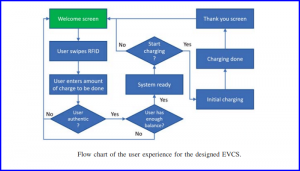Game changing one-design-fits-all fabrication is not only compact and cost-effective, but is also based on the OCP protocol widely accepted world-wide.
The government may be pushing to make Indian automobiles 100% electric by 2030 – a number that was later rolled back to 30% – but what is bulldozing the trend is the pandemic. A significant chunk of commuters seeking to avoid contact with the virus is turning away from public transport and mulling private vehicle purchases. In a country where two wheeler transport is the norm, those previously dependent on public transport as well as those who typically commute to work on foot or cycles are looking to upgrade to two wheelers. With the increasing petrol and diesel prices, existing two wheeler riders and car owners have always been looking out for economical alternatives. And now, they’re looking for greener ones too. Corroborating the green trend, the CEEW Centre for Energy Finance (CEEW-CEF), an initiative of the Council on Energy, Environment and Water, reported that in the last financial year, 0.88% of all vehicle registrations in India were electric vehicles (EVs). And two wheeler and three wheeler EV sales accounted for nearly 96% of the electric mobility market. While the numbers reveal an upward shift, large scale adoption of EVs is hitting roadblocks due to the lack of a robust charging infrastructure.

E-Bike Charging Woes
“The problem is that whenever anyone writes about EV charging and charging points, they are invariably always talking about EV cars. We’re seeing an uptake in powerful charging systems for EVs even in Hyderabad, but a similar infrastructure for two wheelers is yet to catch up,” says Dr. Aftab Hussain, who heads the Processes, Architecture and Technologies Research in IoT (PATRIoT) division at IIITH. It was the professor’s friend, a co-founder of an EV tech company who voiced out aloud this gap. “It got me thinking. He said that the lack of non-standardised charging points for e-bikes in particular is going to be a problem for our country in the foreseeable future,” recounts the professor. The current problem with e-scooters is that they can’t be charged just about anywhere. The existing charging systems are specifically tailored for each make of such vehicles. “Users are typically tied to charging their e-bikes at home. And this again is tremendously inconvenient,” says Dr. Hussain. With residential housing societies yet to ramp up their parking lot infrastructure with charging points, one needs to unplug the scooter battery – a tedious process in itself – physically carry it home, charge it and reconnect it before the next ride. To repeat the sequence of events on a regular basis is a dampener on the path to electric mobility. In a paper titled, “Compact Electric Vehicle Charging Station Using Open Charge Point Protocol for E-Scooters” that has been presented at the 2021 International Conference On Sustainable Energy and Future Electric Transportation, Dr. Hussain and his team of researchers has proposed a unique design and fabrication of charging equipment specifically for e-scooters.

What They Did
Reminiscent of a compact letter box, the team has designed a complete end-to-end charging solution from the electronic hardware components that are sturdy and safe enough for outdoor deployments to the software that contains an appropriate processor to control all input and output devices of the system. Leveraging on the core strength of the lab which lies in flexible electronics, the researchers have used a flexible, inexpensive membrane for the keypad with a longer lifespan than a mechanical keypad. Much like the interface at an ATM, the user has to swipe an RFID card that authenticates her before she enters the amount for which charging has to be done. Safety features such as emergency disconnection of AC power supply in case it goes beyond a minimum threshold, or in case of hardware faults have also been incorporated.

Open Charge Point Protocol
This uniquely designed charging system has many pluses in its favour. Deeksha Devendra, the lead author of the paper cites the compact nature of the charger that makes it possible to deploy it in densely populated urban centers where a need for such chargers is most felt. “Current EV charger designs are bulky, requiring land usage rights, whereas this device can be mounted on a street lamp”, she says. The USP of the system though lies in the Open Charge Point Protocol (OCPP) that it is based on. With this, charging stations are no longer vendor specific. “Our design scores over others’ as it allows users to roam between the charging stations irrespective of the vehicle manufacturer, whether it is an Okinawa or a Hero e-scooter”, says Deeksha. “It’s the OCPP which makes the entire system reliable, both in terms of data security, as well as compatibility with the entire national infrastructure,” remarks Dr. Hussain, adding that their system is ahead of the curve. “Tomorrow, if national infrastructure for charge points has to be set up, it is going to be based on OCPP because everybody else is doing it. We will not have to retrofit something or give a software update or anything like that. We are already following international standards on client server interaction, which is significant for me.“



